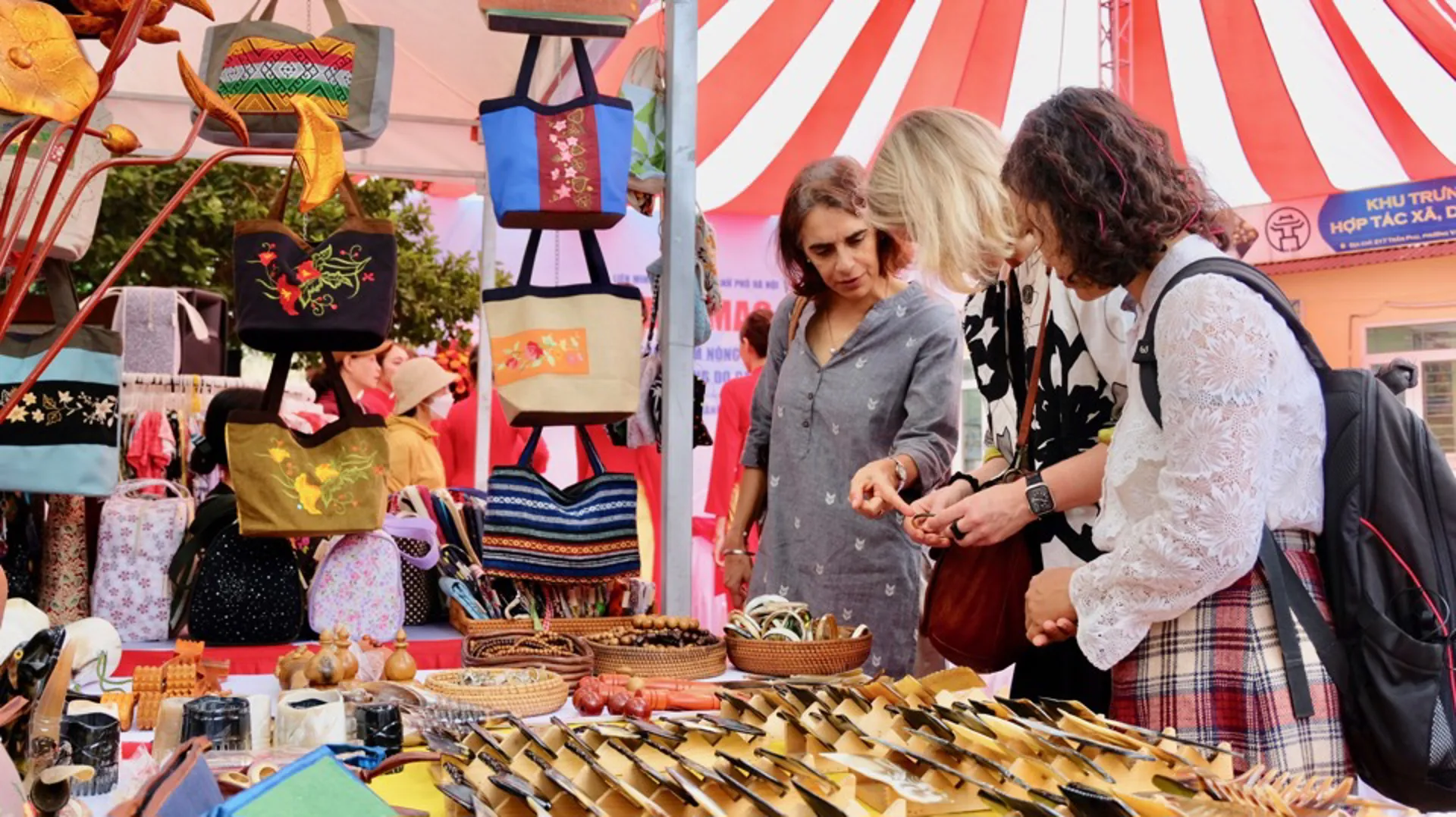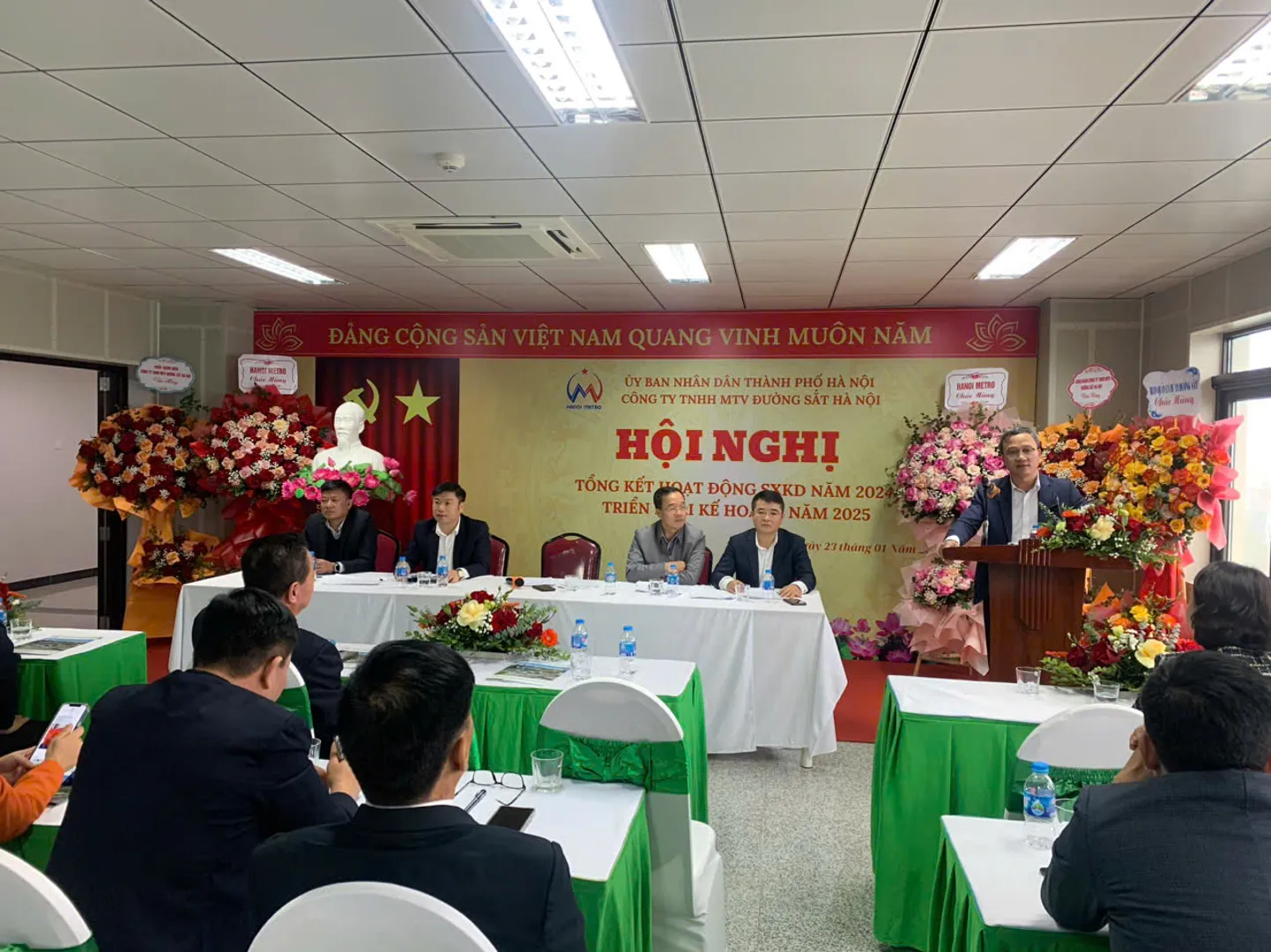Hanoi promotes export of handicraft
It can be seen that the international recognition of the two of Hanoi's traditional craft villages has opened up opportunities for exchange and cooperation with the world's leading craft centers.
Hanoi sets the target to increase the proportion of handicraft exports to 3%-5% of the city's total exports, according to Nguyen Manh Quyen, Vice Chairman of the municipal People's Committee.
Specifically, the city targets the exports at 4.4%-5% per year for the 2023-2025 period, and 5.1%-5.5% annual for the 2026-2030 period.
“In addition to promoting traditional values, Hanoi's craft villages need to create new product designs suitable for the culture of developed countries to increase the export of handicraft products to enhance the product value,” Quyen said.

Foreign visitors buy handicraft products at the "Week of promoting agricultural products and traditional craft villages 2024" on the occasion of the 70th anniversary of Hanoi's Liberation Day (October 10). Photo: Kinhtedothi.vn
To preserve and sustainably develop craft villages, in recent years, Hanoi has implemented many specific solutions such as developing nine creative design centers and promoting One Commune One Product (OCOP) and craft villages associated with tourism.
In particular, Hanoi is focusing on developing industrial clusters to draw production facilities and business households. They will be relocated out of residential areas to curb environmental pollution and risks of fires in craft villages. Currently, 70 industrial clusters have been put in operation and 43 others are under construction.
Hanoi is now home to 1,350 craft villages, accounting for more than 45% of the country's total craft villages. “Hanoi identifies craft villages as one of its development strengths to expand Vietnamese culture,” Quyen emphasized.
Over the past years, Vietnam's participation in free trade agreements (FTAs) has helped reduce export taxes and expand market opportunities for economic sectors and the handicraft industry in particular.
However, many challenges require craft village enterprises to promote linkages, change production scale, and improve product competitiveness.
According to Dr. Dang Mai Anh from the University of Industrial Fine Arts, although Hanoi's handicraft products are beautiful and unique, their designs remain monotonous, which makes it difficult to compete with many handicraft products from other countries.
“To have handicraft products that keep up with and are suitable for market demand, businesses must have the right strategy for the creation and production process. Specifically, businesses and production facilities need to understand market demand and the customers,” Mai Anh said.
She noted that each type of product has its own characteristics and appeals to different customers. “Exploiting the right markets for the right type of goods at the right time will achieve the goal of selling products domestically and exporting them to the world.”
The fact that Bat Trang Pottery and Van Phuc Silk Weaving villages were announced as members of the World Crafts Network on February 14 is a testament to Hanoi's increasingly solid position on the global creative map.
“It can be seen that the international recognition of the two of Hanoi's traditional craft villages has opened up opportunities for exchange and cooperation with the world's leading craft centers. It also affirms that Hanoi's cultural industry development strategy is on the right track, promoting traditional crafts of Vietnam and Hanoi to the global market,” Mai Anh stressed.

Hanoi Metro phát động hành trình xanh chào Xuân Ất Tỵ
Kinhtedothi - Sáng 22/1, Công ty TNHH MTV Đường sắt Hà Nội (Hanoi Metro) đã tổ chức Lễ phát động “Kế hoạch cao điểm Tết và Lễ hội Xuân 2025” với chủ đề: “Hành trình xanh cùng Hanoi Metro chào Xuân Ất Tỵ”, kêu gọi Nhân dân Thủ đô đến với vận tải hành khách công cộng.

Hanoi Metro đặt nhiều mục tiêu lớn trong năm 2025
Kinhtedothi - Năm 2024, Công ty TNHH Một thành viên Đường sắt Hà Nội đã vận hành trên 109.000 lượt tàu, bảo đảm an toàn tuyệt đối trong quá trình vận hành. Năm 2025, đơn vị đặt nhiều mục tiêu lớn để thu hút đông đảo hành khách sử dụng tàu điện để đi lại.

Hiệu quả ứng dụng iHanoi: Giá trị từ sự hài lòng của người dân
Kinhtedothi - Qua hơn 6 tháng triển khai chính thức ứng dụng Công dân Thủ đô số - iHanoi, ứng dụng thể hiện tâm huyết và quyết tâm rất cao của chính quyền TP trong mục tiêu “lấy người dân, doanh nghiệp làm trung tâm phục vụ”.




-1740107527.jpg)
